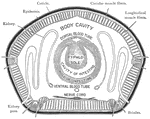Clipart tagged: ‘gullet’
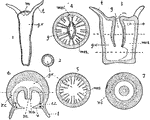
Cnidaria
"Sections of types Coelenterates (diagrammatic): 1 (longitudinal) and 2 (transverse) of a tubular hydroid;…

Earthworm
Dorsal view of internal structures of earthworm after cutting through the dorsal wall lengthwise and…
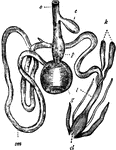
Fowl Digestive System
"Digestive system of the common Fowl. o, Gullet; c, Crop; p, Proventriculus; g, Gizzard; sm, Small intestine;…

Hagfish Respiratory System
"Respiratory system of hag, from ventral surface. b., Barbules; m., mouth opening on ventral surface;…
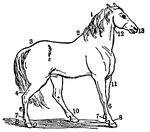
Horse
A horse, with names of parts. 1, crest; 2, withers; 3, croup; 4, hamstring; 5, hock; 6, cannon; 7, fetlock;…

Larynx
The larynx viewed from its pharyngeal opening. The back wall of the pharynx has been divided and its…

Mouth
"The mouth, nose and pharynx, with the commencement of the gullet and larynx, as exposed by a section,…

The Mouth, Nose, and Pharynx
The mouth, nose, and pharynx, with the commencement of gullet (esophagus) and larynx, as exposed by…

The Mouth, Nose, and Pharynx
The mouth, nose, and pharynx, with the larynx and commencement of gullet (esophagus), seen in section.…

The Mouth, Nose, and Pharynx
The mouth, nose, and pharynx, with the commencement of the gullet (esophagus) and larynx, as exposed…

Nasal and throat passageways
"Diagram of a Sectional View of Nasal and Throat Passageways. C, nasal cavities; T,…

Paramecium
"Paramecium in optical section. A, anterior end; c, tilia; e.d., ectosarc; e.n., endosarc; f.v., food…
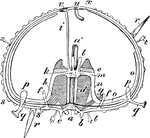
Sea Urchin Section
"Diagram of an Echinus (stripped of its spines). a, mouth; a', gullet; b, teeth; c, lips; d, alveoli;…

Snail
Diagram of the mouth of a snail, showing the lingual ribbon. br, brain; c, buccal cavity; co., caelom;…
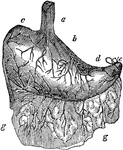
Stomach
The human stomach. Labels: a, the esophagus or gullet; b, the cardiac portion; c, the left extremity;…
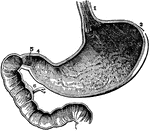
The Stomach
The inside of the stomach with the beginning of the intestines. At 3 is the left end and at 4 is the…

Swallowing Muscles
"The circular muscle of the mouth (1) and the buccinator or trumpeter's muscle (2) help the tongue to…

